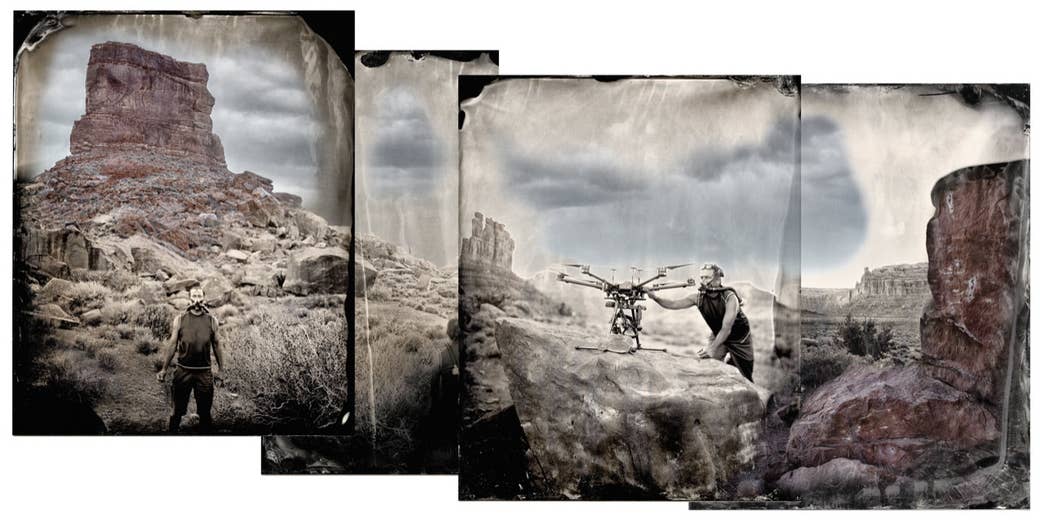Kalen Goodluck, Albuquerque, New Mexico
Kalen GoodluckThe Apache Tears Motel
"Kalen Goodluck is Diné, Mandan, Hidatsa, and Tsimshian. The Apache Tears Motel was once a historic roadside stop for motorists in Tucson off Benson Highway and featured a kitsch statue of a cross-legged Indian donning a headdress. It sits on a tract of land illegally seized from Western Apache Bands in 1886 and was sold to benefit the University of Arizona’s endowment. This photo and others was a part of High Country News’ ‘Land Grab Universities’ project, an investigation into how expropriated Indigenous lands formed the foundation of today’s public land grant university system."
Will Wilson, Santa Fe, New Mexico

Will Wilson
"When it comes down to it, I really love sharing the craft. The wet plate process really enables a slower more personal and direct experience of photography, and then there is the gifting of the photographic object to the sitter in exchange for a digital facsimile. I made this recently. It's the AIR protagonist figuring out the drone he uses to photograph Abandoned Uranium Mines on the Navajo Nation. For many of my tintypes, you can engage with the person and collaborator in the portrait through the Talking Tintype app, it's a free download from the Apple App Store. I also run the photography program at The Santa Fe Community College."
Josué Rivas, Chinook, Cowlitz, and Clackamas Territory | Portland, OR

Josué Rivas
A woman walks in the snow during a blizzard. Standing Rock, North Dakota, USA. November, 2016.
“I want my images to be a reminder of our collective power not only as Indigenous peoples but also as human beings. The intention of my work is to be a starting point for a conversation about decolonization, acknowledgment, healing, and reconciliation, not only with each other but also with all our relations.
My identity is the foundation and serves as a guide for my work. Whether I'm documenting Indigenous movements or creating spaces for us to tell our own story, my ancestors stand behind me and my descendants in front of me. My practice is also guided by the understanding that we as Indigenous peoples will exist in the future; I believe we are in a moment where telling our own stories and reclaiming our narrative is a first step towards reimagining what that future looks like. Technology will shape visual storytelling, and I think Indigenous peoples will be at the forefront of that transition. My hope is that our identity will continue to serve as a reference point for the stories we tell now — we are future ancestors.”
SEE THE REST HERE
No comments:
Post a Comment